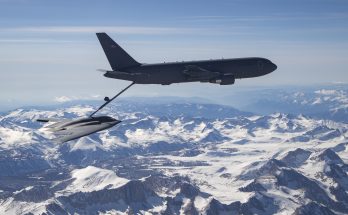The Egyptian military is to start receiving locally-produced mine-resistant, ambush-protected (MRAP) armored vehicles.
Citing reports in local media, defenceWeb reported on January 15, 2019, that the Egyptian Army will soon be receiving the ST-100 and ST-500 MRAPs, which both appeared for the first time at the EDEX military exhibition in Cairo in December 2018. The Deputy Chairman of Military Factory No. 200 reportedly revealed the information in an interview on Egyptian TV.
It is not known how many are to be delivered.
The International Marathon United Technology Group, an Egyptian firm, produces both the ST-100 and the ST-500. As defenceWeb noted, “They were developed in South Africa in 2016 by SASKA, which was owned by an Egyptian businessman. The company was moved to Egypt in 2018 and rebranded as IMUT in partnership with the Egyptian military.”
Alongside the unveiling of the vehicles at EDEX, IMUT’s president, Michel Knight, told IHS Jane’s Defence Weekly that the Army was particularly interested in the ST-100. Knight said that the Army had requested some unspecified adjustments to the ST-100, but indicated that a contract for the vehicles would be inked shortly. IMUT’s vice-president, Reham Fahmi, told the publication that the military has already carried out testing with the ST-100.
The ST-100 can be armed with various different weapons, such as a remote turret featuring a 7.62mm or 12.7mm machine gun. The vehicle has a weight of 14,500 kilograms and can reach speeds of up to 115 kilometers per hour. The smaller ST-500 weighs 8,000 kilograms and can travel up to 135 kilometers per hour. It canalso support remote-controlled weapon stations or other armament packages.
Military markets analyst, covering Eurasia, Middle East, and Africa.




